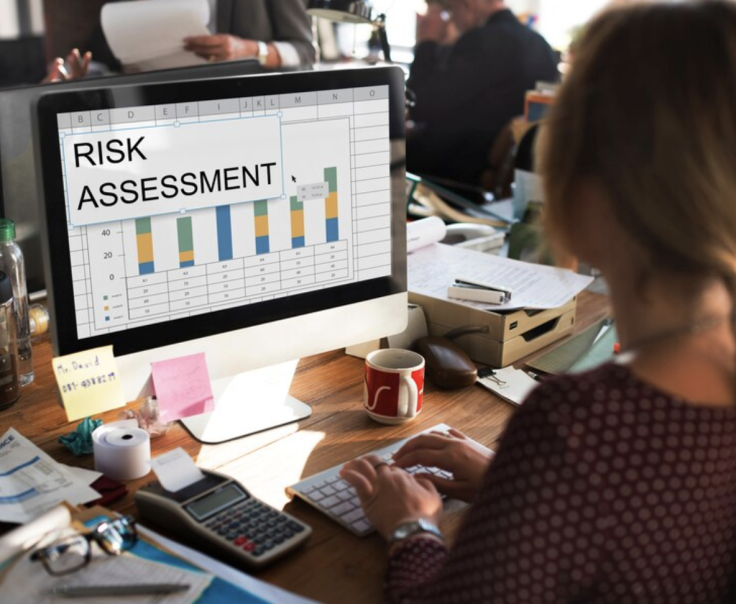Applying Strategic Risk Control Tactics to Your Trading
Do you want to trade more safely and consistently? Discover top tips from expert traders on controlling risks in your trades.
Losses occur when markets move against our expectations. Although it is tempting to pursue every opportunity, traders must understand investment risks beforehand to endure downturns. Successful traders accept this trading complexity. Comprehensive risk management strategies and excellent trading plans allow sustainable incomes despite losses.

Here's how to implement strategic tactics for maximising profits.
Set Risk Exposure Upfront To Preserve Capital
Determining potential losses before entering any trade is critical to preserving trading capital. Generally, risk is no more than 1% of total account equity per single position, with maximum risk across all open trades capped at 5% of equity. For example, with a $5000 account on TradingView, at most, $50 should be at risk in any position. should be at risk in any position. Traders must then calculate the appropriate trade size based on where stop losses are placed to limit losses to $50 or less per trade.
The main benefit of this systematic approach is that it helps preserve account equity even after a string of losing trades. Additionally, traders are more likely to maintain sufficient free margin to capitalise on new opportunities in the market. This avoids the common pitfall of having trading capital tied up in existing trades, forcing traders to forgo potential profits from other emerging opportunities.
Ensure Reward Outweighs Risk
In every trade, potential profits should justify the capital put at risk. Establish a risk-reward ratio as part of your trading plan to quantify this relationship. For instance, if the maximum possible loss on a real estate investment is $50,000 and the potential gain is $150,000, the risk-reward ratio is 1:3. This means the possible profit is three times the potential loss. If only three of ten such investments are profitable, you would still net $90,000 in profit despite only a 30% success rate.
Calculate its historical win-loss ratio and average win and loss sizes to determine if a trading strategy has the edge. If these metrics indicate long-term profitability, risk is likely being appropriately managed. Failing to understand these numbers puts trading accounts in jeopardy.
Consider the win percentage needed to profit, given specific risk-reward ratios. For example, with a ratio of 3:1, a win rate of just 25% is sufficient to make money. However, with a 1:1 ratio, a 50% win rate would be required. Online calculators can determine required win rates based on specified risk-reward ratios. Factoring this in is critical to setting realistic profit objectives.
Diversify Portfolio By Reducing Correlation

Diversification involves selecting less correlated assets when opening different positions. If the same factors drive two assets, their prices would move similarly. Granted, this is a good thing when the market is favourable. However, things sometimes go differently than planned, and the aim should always be to limit potential losses. Traders should study any asset class they choose to invest in for a better understanding of asset correlation. Knowing the degree of correlation across one's trades allows better diversification and risk reduction. Holding highly correlated trades can multiply losses when markets turn. So, avoid highly positively correlated assets in the same portfolio.
A positive correlation means assets move in the same direction. A negative correlation means they move in opposite directions.
- Positively correlated assets like EUR/USD and USD/CHF rise together.
- Negatively correlated assets like the USD Index and gold move conversely.
- Uncorrelated assets like S&P 500 and Bitcoin won't react the same way.
Optimal Stop Loss Placement
Systematically basing stop-loss and take-profit levels on concrete rules can improve trade outcomes. Traders can use moving averages, support/resistance levels, average true range, or trailing stops.
With moving averages, place stops above or below a specified MA line for long or short trades. This allows dynamic stop levels as the MA changes. Support and resistance levels also provide clear areas to set stops just beyond, allowing room for normal price fluctuations.
Average true range (ATR) measures average pip movement over a period. Based on recent volatility, stops can be set at a minimum distance using the ATR. More conservative traders can use the maximum ATR as the stop distance.
Trailing stops are another tool that moves the stop level with the position as it becomes profitable, locking in gains while maintaining the preset stop distance.
Take-profit levels should be set similarly to stop losses. Support, resistance, and moving averages can identify profit targets. Exiting early helps avoid giving back gains when reversals occur.
Keep Risk Consistent, Manage Emotions

After winning trades, greed can lead traders to dangerously increase position sizes. It is always better to add small profits to existing winners. Generally, maintain a consistent risk framework across all trades.
You should enter and exit trades precisely based on system signals without second-guessing. Keep emotions in check during wins and losses. Consistent rules and risk parameters help sustain long-term profitability.
Managing Trading Risk Through Ongoing Evaluation
Finally, successfully controlling risk starts with tracking all trades. You can use a digital or paper-based journal to record every trade you make. After a predefined period, formally evaluate performance — are profits consistently exceeding losses overall? If not, adjust your trading strategies accordingly.
Ongoing refinement requires continually revisiting strategy based on market feedback and outcomes. Profitability results from fine-tuning approaches when the data suggests changes are needed. Yet, limiting the downside on individual trades and across the portfolio sustains longevity as a trader even amid inevitable losses.
© Copyright IBTimes 2025. All rights reserved.





















